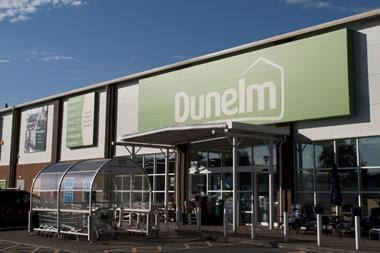The retailer revealed a 5.8 per cent slump in Argos’s like-for-likes during the second quarter with sales totalling£927 million, resulting in a first-half total down 3 per cent to£1.86 billion.
Home Retail chief executive Terry Duddy insisted first-half profit would be in line with internal expectations. He said: “Profits for the financial year as a whole are, as ever, dependent on the key Christmas trading period, though the group’s operating model and financial strength will see us well positioned to compete in challenging conditions.”
Argos was hit by a slower rate of growth in electricals and continued decline in furniture and homewares. Gross margin was down 25 basis points.
Like-for-like sales at Homebase fell 8.3 per cent – an improvement on the first quarter – and the retailer warned that “substantial write-downs” would be necessary.
Analysts were concerned about how profits would hold up next year. Panmure Gordon’s Philip Dorgan cut his 2010 forecast to£276 million, compared with a consensus of£324 million. He said: “We are assuming zero profits for Homebase and that Argos’s profits will fall by 30 per cent.”
Charles Stanley analyst Sam Hart said: “The highly discretionary nature of the offer at Argos and Homebase, combined with high operational gearing, makes the group particularly vulnerable to the consumer downturn.
“Gross margins are expected to come under pressure as a result of sterling’s weakness and inflation in Asian sourcing markets. The decision to take a goodwill write-down on Homebase suggests its problems are structural rather than cyclical.”
However, Investec analyst David Jeary said Home Retail remained his “preferred play at the bigger-ticket, more discretionary end of the market”.
He argued: “Home Retail’s highly regarded management team and the value positioning of Argos will enable it to better cope with a continuation of depressed consumer demand.”
























No comments yet